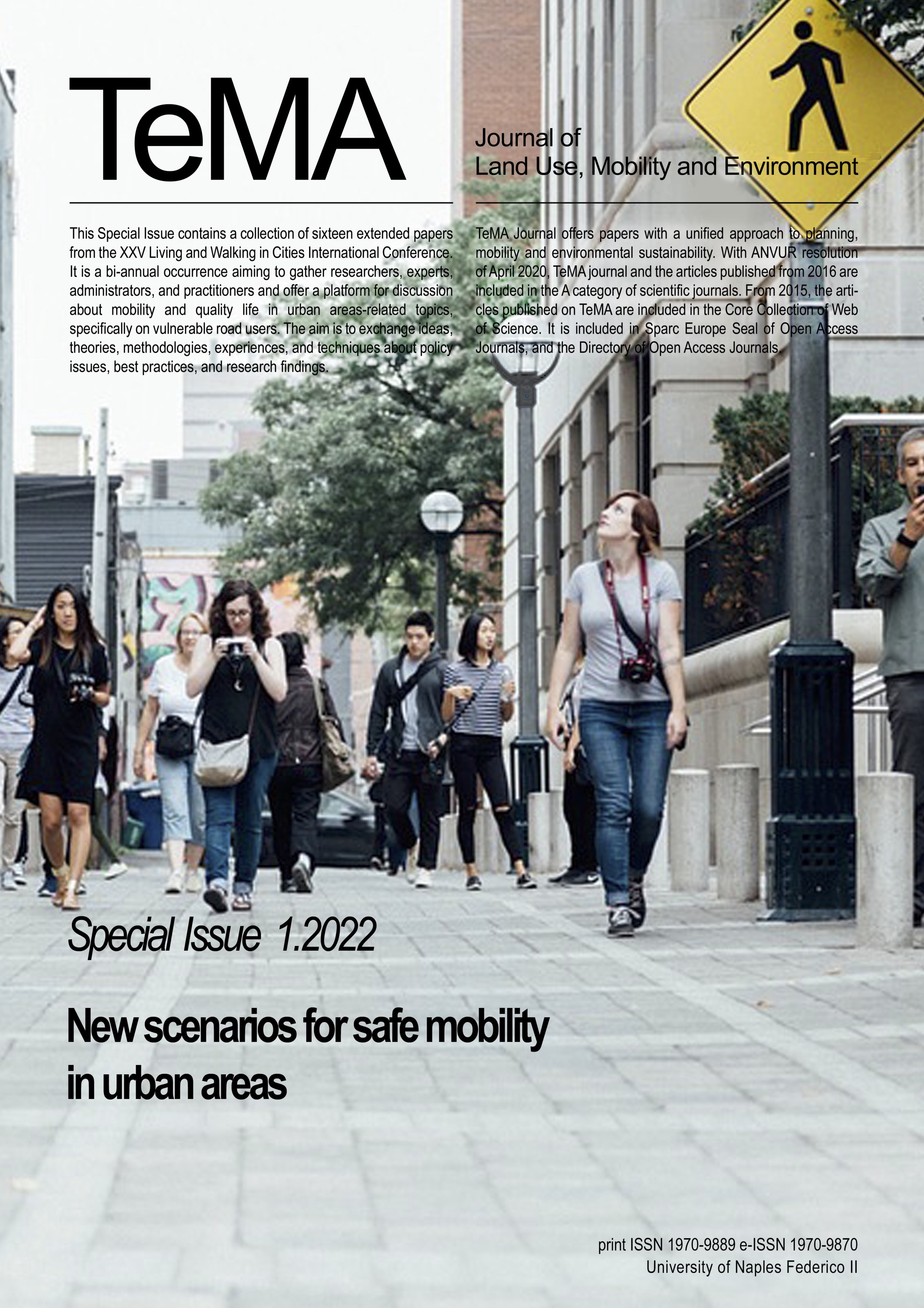Well-being, greenery, and active mobility
Urban design proposals for a network of proximity hubs along the new M4 metro line in Milan
Abstract
The paper summarizes the results obtained from the action research conducted at Politecnico di Milano (2018-2020) for Milan Municipality and MM4 SpA. It is a Masterplan for reorganizing areas and public spaces along the new M4 metro line route.
The paper aims to highlight the positive effects that planning at various scales brings to the city in terms of new green areas, new spaces for inhabitants and users, and new routes to get around the city. The three concerns are at the basis of a conscious process of improvement of living conditions in the major urban areas worldwide, which are increasingly characterized not only by climate, environmental and social inclusion problems but also by health problems. Without disturbing the pandemic issue, important urban matters must be addressed from an urban health perspective to support the prevention of chronic degenerative diseases. Policies for the re-greening of the city and the extension of slow mobility routes help in this task. The paper shows how these strategic actions can be adapted to the dense and stratified fabric of Milan city to achieve and boost a model of a healthy, active, and sustainable city.
Downloads
References
Antonovsky, A. (1979). Health, Stress and Coping. San Francisco: Jossey-Bass Publishers.
ARUP. (2014). City Alive. Rethinking green infrastructures. London: ARUP.
Barton, H., & Grant, M. (2006). A health map for the local human habitat. Journal of the Royal Society for the Promotion of Public Health, 126(6), 252-261. doi:https://doi.org/10.1177/1466424006070466
Buffoli, M. (2014). Urban Health: strategie per la sostenibilità urbana. Milano: Franco Angeli.
Capuano, A. (2020). STREETSCAPE. Strade vitali, reti della mobilità sostenibile, vie verdi. Macerata: Quodlibet.
Carlton, I, (2009). Histories of Transit-Oriented Development: Perspectives on the Development of the TOD Concept. Working Paper, No. 2009,02, University of California, Institute of Urban and Regional Development (IURD), Berkeley, CA.
Dekoster, J., & Schollaert, U. (1999). Cycling: the way ahead for towns and cities. Belgium: European Communities.
Dittmar, H., & Ohland, G., Eds., (2004). Transit town. Best practices in Transit-Oriented Development. Island Press, Washington.
Dorato, E. (2020). Preventive Urbanism. The Role of Health in Designing Active Cities. Macerata: Quodlibet.
Dovey, K., & Pafka, E. (2020). What is walkability? The urban DMA. Urban Studies, 57(1), 93-108. doi:10.1177/0042098018819727
Manzini, E. (2021). Abitare la prossimità. Idee per la città dei 15 minuti. Milano: Egea.
McNeill, W. H. (1976). Plagues and Peoples. New York, USA: Anchor Books.
Miano, P. (2020). HEALTHSCAPE. Nodi di salubrità, attrattori urbani, architetture per la cura. Macerta: Quodlibet.
Ministero della Salute. (2016). Piano Nazionale della Cronicità. Roma: Ministro della Salute.
Rydin, Y., Bleahu, A., Davies, M., Dávila, J. D., Friel, S., De Grandis, G., Howden-Chapman, P. (2012). Shaping cities for health: complexity and the planning of urban environments in the 21st century. UCL The Lancet, 2079-2018. doi: 10.1016/S0140-6736(12)60435-8
Sachs, J. D., Kroll, C., Lafortune, G., Fuller, G., & Woelm, F. (2021). Sustainable Developmente Report 2021. The Decade of Action for the Sustainable Development Goals. Cambridge, UK: Cambridge University Press.
Sallis, J. F., Cerin, E., Conway, T. L., Adams, M. A., Frank, L. D., Schipperijn, J., & Smith, G. (2016, April 1). Physical activity in relation to urban environments in 14 cities worldwide: a cross-sectional study. The Lancet, 387(10034), 2207-2217. doi: 10.1016/S0140-6736(15)01284-2
Toppetti, F., & Ferretti, L. V. (2020). La cura della città. Politiche e progetti. Macerata: Quodlibet.
WHO, World Heritage Organization (2005). Preventing chronic diseases: a vital investment. WHO global report. Geneva: World Health Organization.
WHO, World Heritage Organization (2018). Global action plan on physical activity 2018–2030: more active people for a healthier world. Ginevra: World Health Organization.
Copyright (c) 2022 TeMA - Journal of Land Use, Mobility and Environment

This work is licensed under a Creative Commons Attribution 4.0 International License.
Authors who publish in this journal agree to the following:
1. Authors retain the rights to their work and give in to the journal the right of first publication of the work simultaneously licensed under a Creative Commons License - Attribution that allows others to share the work indicating the authorship and the initial publication in this journal.
2. Authors can adhere to other agreements of non-exclusive license for the distribution of the published version of the work (ex. To deposit it in an institutional repository or to publish it in a monography), provided to indicate that the document was first published in this journal.
3. Authors can distribute their work online (ex. In institutional repositories or in their website) prior to and during the submission process, as it can lead to productive exchanges and it can increase the quotations of the published work (See The Effect of Open Access)

